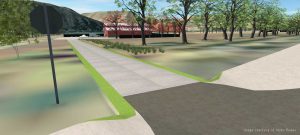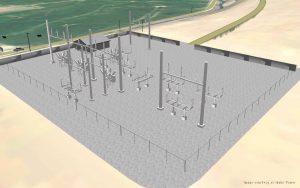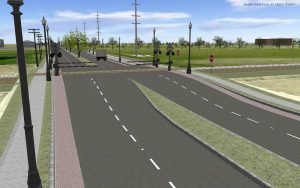How BIM Can Help with Engineering Design Data for Utilities

BIM, a process for creating and using a 3D intelligent model for planning, designing, building, and managing infrastructure, is used across multiple industries to get accessible and actionable insight throughout project lifecycles. BIM improves coordination, creates and delivers intelligent models, and reduces rework and material waste.
Since utilities drive some of the largest construction budgets, applying the principles of BIM as you update old and build new infrastructure can improve cost control and reduce construction waste below the typical 30% level. How?
Consider a substation project. The pre-construction phase typically involves three stages:
1. First, utilities gather conditions data and analyze the site, helping make decisions to meet project requirements.
2. Then, you create preliminary plans for your substation and the surrounding environment.
3. Finally, you take plans to stakeholders for review. For example, the public will want to see what the substation will look like from different vantage points and understand how it might change the neighborhood.
Communicating intent in new ways is a critical part of this process. That’s where BIM fits in. With BIM design concepts are displayed in a 3D real-world environment which non-technical stakeholders can understand.
The following examples are from Idaho Power who also uses Autodesk InfraWorks 360 and a wealth of LiDAR data to help create more accurate substation design models for landowners and community stakeholders:

Outside view of a conceptual design for a substation in a barn using InfraWorks 360. Image courtesy of Idaho Power and Autodesk.

InfraWorks model of a substation in Eastern Idaho used in a presentation to the landowner, station is currently under construction. (Image courtesy of Idaho Power and Autodesk)

Two alternative proposals were presented at a board of directors meeting—a transmission line across a property or a decision to relocate a proposed substation. (Image courtesy of Idaho Power and Autodesk)
As you can see, you can view multiple scenarios, make changes on the fly, get approvals faster, and decrease the risk of costly changes later in the project. Intelligent model-based design processes keep projects on schedule:
“Inaccuracies in drawings can cause problems in the field,” said Erin Sorensen, a GIS technician with Idaho Power. “A field technician could drive several hours to a site to verify location of facilities, and if they forget something during a site visit they may have to go back again to collect more data. In advance of major work, a substation designer previously referred to detailed aerial imagery to correct as much of a yard plan as possible. But it took weeks, and you might still need to do a site visit to verify things like errors in footing heights and clearances.”
“You can generate a model in InfraWorks more quickly,” said Eric Bush, a CAD technician with Idaho Power. “…being able to share design alternatives in context helped to speed the process of selecting the preferred option. Stakeholders, even those with no design experience at all, can more clearly see how infrastructure may look. I like that Idaho Power employees are beginning to use 3D modeling to make more informed decisions earlier and with fewer site visits.”
Rules in BIM also drive workflow, integrated analysis, material selection, and design checks. Improving accuracy and keeping designs consistent. And, with a secure, common engineering design environment, reviews, approvals, and notifications are automated and streamlined at each stage – reducing confusion about which version is correct and where the design is in the approval process. And when changes are made, the intelligent model updates all associated connections, materials, and documentation.
If you’ve only previously used 2D data, you’ll know that constructability reviews and simulations were tedious, time consuming, and represented one of the biggest challenges in cost overruns and project delays. By sharing a 3D model during reviews, everyone can quickly assess potential construction and operational issues before anything is built. You can simulate construction timelines, order materials, and create final construction packages with detailed drawings, intelligent models, materials, timelines, and more.
As you can see, BIM helps you transform the entire substation project lifecycle and the intelligence of the model is maintained throughout, improving design productivity and accuracy. With BIM you can also safely and securely manage engineering documentation and project lifecycles, and more. Ultimately, overall project costs can be reduced by as much as 5%.
Watch this video to learn more.
















































